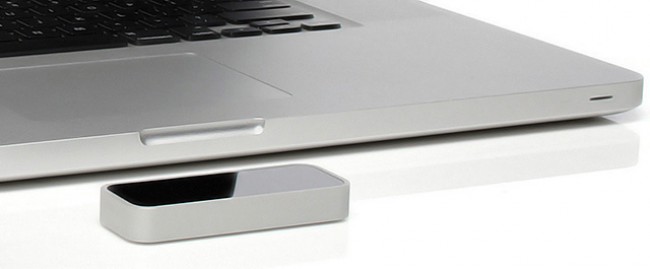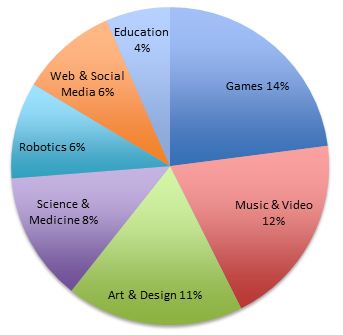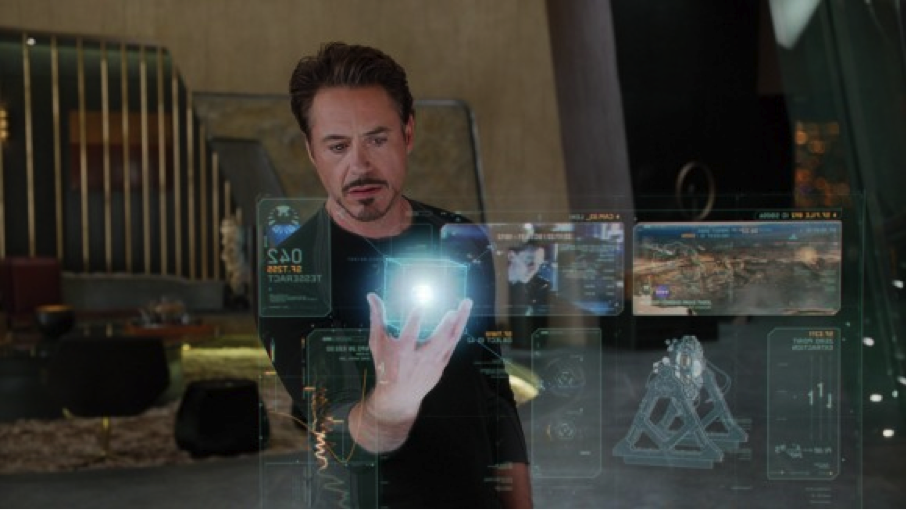LG’s 100-Inch QNED evo AI TV Redefines Big-Screen Viewing in South Africa In a bold leap forward for home entertainment, LG Electronics South Africa…
Leap — more than a gimmick


Despite this all important how, it is the what that computer technology and innovation gets focused on time and again. Upping processor power, increasing hard drive sizes or updating software versions take precedent over the ways that we actually interface with our computers. After all, the mouse and keyboard are as old as they are reliable and accurate. It brings the old adage to mind, ‘if it ain’t broke don’t fix it.’
But every once in a while an innovative company puts its hand up and says, “what about the ways in which we interact with computers? Why don’t we invent the 21st century mouse?”
If you thought Apple was that company and touchscreens were the new mouse then you’d be wrong, or maybe you just haven’t heard about the Leap from Leap Motion — a new way to interact with your computer.
It uses the same principle behind touchscreens (natural user interface) operating a computer using natural gestures: it’s your pinching to zoom, swiping to move interface. Current natural interfaces are limited by their 2D nature though — you can’t push an object on a current touchscreen by literally pushing forward, you would have to swipe upwards on the 2D screen.
Not anymore though. Imagine pushing your hands forward in front of your monitor to push an object in a game or application — this is Tony Stark or Minority Report, only better. This is the Leap.
According to the blurb, the Leap is “more accurate than a mouse, as reliable as a keyboard and more sensitive than a touchscreen. For the first time, you can control a computer in three dimensions with your natural hand and finger movements.”
Three dimensions folks. Say goodbye to pinching and swiping and get your grab, push, pull and rotate on.
The Tech
The Leap is the size of a USB. It requires no software, you simply plug it into your laptop or desktop and wave your fingers around to calibrate it. The tech is so accurate that it can register (and distinguish) all ten of your fingers as well as objects that you might be holding.
The information on how the tech works is pretty scarce at the moment. But thanks to lovely forum rumours and speculation we are proud to announce that we have got 100% the gist of it.
Leap uses infrared light, as well as CCD cameras, to track hundreds of thousands of points at one time. It has a lot of sensors (exact number to be confirmed) that detect positions at an astounding 0.0.1mm precision within eight cubic feet. This is repeated between 30 and 200 times per second. How taxing it is on your computer varies according to the hardware it is connected to, but it smoothly sits at a two to five percent CPU usage rate.
The tech specifications are yet to be announced but given the $70 USD price tag it seems Leap Motion targeting the mass market, and so it should run on a wide range of computers. The promise is that Leap is 100x more accurate than any other motion sensing interface around (cough cough Kinect and Wii). In fact, the device’s performance is incredible, it has zero perceptible lag, it reads subtle motions, including positioning (not just direction), and it registers simultaneous inputs.
Check out The Verge’s hands on video below to see the Leap in action.
Leap of Faith
So it all sounds very fancy, perhaps even gimmicky. Yet the bigwig investors behind this tech indicate that Leap could be here to stay. Perhaps not as a replacement for your mouse and keyboard, but as something that you use simultaneously with your other input devices.
Investors include the co-founders of Paypal, Sean Parker (of Napster and Facebook fame), and Brian McClendon from Google (VP of engineering of Maps, Streetview etc), as well as Bill Warner from Avid Tech — the film editing software. This indicates the kinds of applications that might take advantage of the Leap as well as the scope and attention that Leap Motion have garnered during the four years of development.
Push forward: possible applications
The most interesting aspect of this tech is how it could be used and which fields are likely to implement it. Just off the top of one’s head you could see:
Gaming taking huge advantage of Leap — imagine a first-person shooter where you actually aim and shoot at your screen with your fingers. I personally would love to play a Star Wars game where I can literally force grab and throw pesky Storm Troopers out of the way.
Art and design will be revolutionised: drawing a 3D object will be a cinch, quickly rotating with one hand as you draw with the other.
Medicine could see a new way of performing remote or pinhole surgeries — and doctors could easily review a patient’s X-ray or data sheet during surgery without having to remove their gloves or even leave the patient’s side — simply by gesturing from the operating table itself.
Education — classes could become more fluid and interactive. Imagine a geography lesson where the kids could effortlessly navigate an interactive atlas without leaving their desks.
These are just a few fields that Leap could impact, but Leap Motion are being particularly smart here (not to say using infrared and CCD camera tech with sensors to create a 3D space is not smart) by handing the applications aspect over to developers around the world.
There are already 1,500 SDK kits in 143 countries, and Leap is only coming out in January/February next year. Leap Motion have said that they envision a dedicated app store, as well as community driven developer hubs where developers can share ideas and collaborate in the same area.
So far developers have shown interest in creating applications for the tech in the following fields:

And so here we sit, at a point in history where we may look back at touchscreens and laugh. It sounds odd to say that touch technology is old news, but the possibilities of Leap are far more exciting and far reaching than touch could ever hope for.
With big names behind it, applications being developed as I write and, most importantly, innovative tech and a company that has a clear vision, it seems that Leap is far more than just a gimmick. It may just be a USB peripheral at the moment, but Leap Motion is in talks with OEMs to get it embedded in laptops, desktops, smartphones and tablets already and if that happens, we’ll have no choice but to take the Leap.
Leap has been tested and works on Windows Vista/7/8 and Mac OS X, with Linux on the way.

